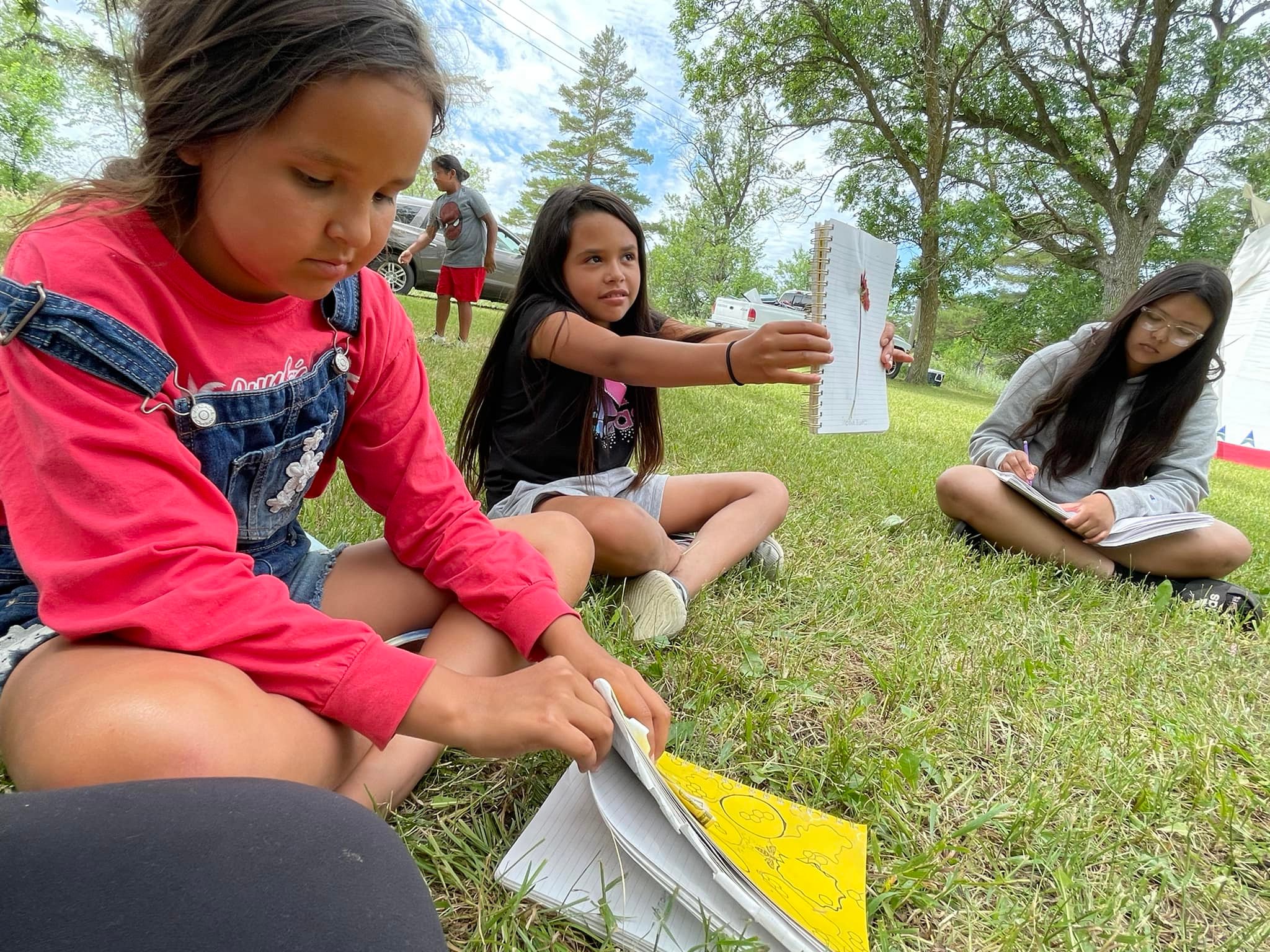Jane Rasmussen, Director of the Sisseton Arts Council, has lived in the Sisseton area for a long time. She remembers the early days of the Arts Council and how it has developed, “We literally went up and down the street asking businesses for $50 to bring a traveling theater company to town, and we’ve been supporting the arts in our community ever since.”
The Arts Council has grown substantially since those days. They’ve hosted artists from around the world, created residencies, and continuously pushed for public art displays, making Sisseton beautiful for the entire community.

Last year, the Sisseton Arts Council received permission from the City of Sisseton to place sculptures of an 8-point design on city property. The 8-point design was originally created by artists Nicholas Blaske and Markus Tracy. The design was first put in place as a crosswalk mural that intersects Main Street through downtown. Then it took off. The community resonated with art.
The 8-point design utilizes geometric shapes from both Dakota and Scandinavian cultures with the focal point being an 8-point star. Blaske describes the perspective of the design, “To the Dakota people, it is a star, a symbol of hope and guidance. To the Norwegians, it is a rose, commonly seen on thick hand-knit sweaters, giving the early settlers a comfort of home.”
Local businesses began to sponsor the design—setting the design in flowerpots outside their shops. Eventually, Blaske was commissioned to create a sculpture of the symbol. He chose to make it a mirror so that when it is being observed by community members, they will see themselves reflected in a symbol that represents the beauty of togetherness. The design has been adopted by the City of Sisseton to be on its official flag. Today, the flag flies proudly beneath the United States and South Dakota flags at City Hall.
Down the street, Dustina Gill has been spearheading a Native youth movement in Sisseton through her nonprofit, Nis’to Incorporated. In Dakhotaiyapi, Nis’to is defined as “a concern for others outside of ourselves.” Gill, a long-time resident of Sisseton, understands the history of this place, and the impact of expression. The youth at Nis’to learn both leadership and technical skills and are encouraged to express themselves through a variety of art forms. They sew, they paint, they write poetry, and play music—all cultural and strength-based approaches that reaffirm their place and roles on the Lake Traverse Reservation.
Recently, Nis’to independently hosted a youth-led art show that proved art could bridge communities. “The rooms were packed. People who don’t usually mingle were mingling, but they showed up to see the art and the kids saw that. Their energy from seeing all these people come to see their work was so amazing,” said Gill.
Sisseton will be buzzing with even more creative youth programming over the next year, including several apprenticeships with local as well as visiting artists. Gill has been quietly volunteering to coordinate these types of learning opportunities for years because she is deeply passionate about helping others pass on their culture to the next generation. Through a wide range of topics from poetry to the environmental effects of cattle grazing, her youth have come to describe much of the programming as “a rite of passage camp for a lot of the siblings of the kids, younger cousins, waiting to be old enough to be a part of it.”

Gill believes that art will continue to survive and even thrive in Sisseton as long as the youth are interested. She feels her kids desire to reach out to other artists. “They want to learn and as long as they want to learn, they will have the desire to engage with other artists.” Gill believes that art is truly the great connector of community. She has seen it happen more than once—and hopes to continue seeing art bridge all differences.
Gill is not alone. As the Sisseton community continues to embrace art, they are also learning to embrace each other.
The Sisseton Arts Council is part of the Community Creativity Cohort 2, a group of 40 organizations that are making art central to their community-building efforts. The Cohort was funded by the Bush Foundation and operated by Arts Midwest from 2019-2022. Check out our History to learn more about this program. This story was created in partnership with NewPublica.
